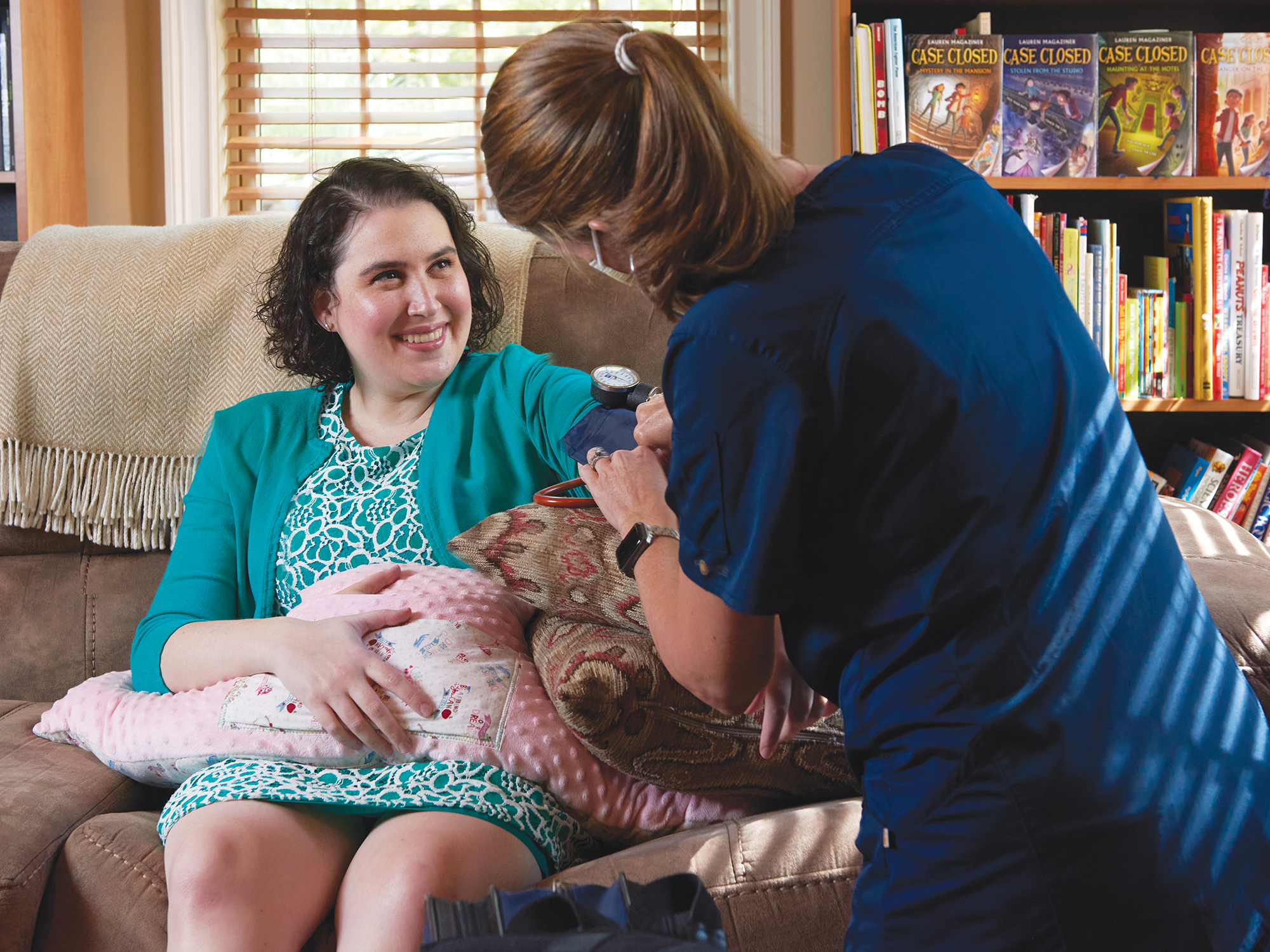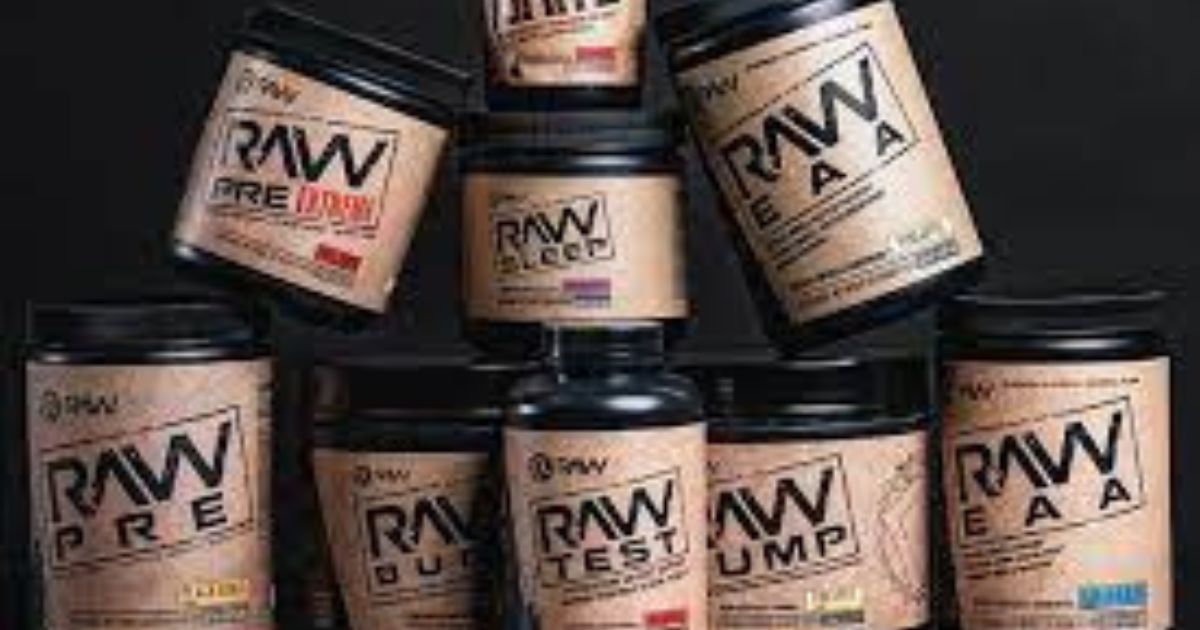Home parenteral nutrition is a medical treatment where nutrition is supplied directly into a vein. It is used for patients who cannot eat or properly digest food.
Home parenteral nutrition is a form of medical treatment used for patients who cannot consume or digest food due to various health conditions. This treatment delivers nutrition directly into the patient’s vein through a catheter. The therapy is also referred to as intravenous nutrition or total parenteral nutrition (tpn).
It provides essential nutrients like fats, carbohydrates, and proteins and may also contain additional vitamins and minerals. The treatment is usually recommended for patients with chronic intestinal failure, severe crohn’s disease, and other medical conditions that make it difficult to absorb nutrients from food. The goal of home parenteral nutrition is to help patients maintain their health and improve their quality of life.

Credit: penntoday.upenn.edu
Home Parenteral Nutrition (Hpn) – An Introduction
Home Parenteral Nutrition (Hpn)
Home parenteral nutrition (hpn) is a medical treatment that provides nutrient solutions to individuals who cannot consume food orally. The therapy involves infusing nutrients directly into the patient’s bloodstream using a catheter, bypassing the digestive system. Hpn is a lifeline for patients who require long-term medical nutrition support due to chronic conditions such as crohn’s disease, short bowel syndrome, or cancer.
Definition Of Home Parenteral Nutrition (Hpn)

Hpn is a complex medical treatment plan specially designed to provide nutrients to individuals who cannot consume food orally. The treatment is administered using a catheter that is surgically placed into a large vein. It involves supplying essential nutrients like carbohydrates, proteins, fats, vitamins, and minerals directly to the bloodstream.
Historical Context Of Hpn
The first recorded use of hpn dates back to the 1960s when the technique was developed to help children with congenital defects. Over the years, advances in medical technology have increased the effectiveness and safety of this treatment. In the past, hpn was only available in hospitals, but with the advent of home infusion therapy, patients can now receive the treatment in the comfort of their homes.
Types Of Nutrient Solutions Used In Hpn

Several nutrient solutions are used in hpn. The most common are standard nutrient solutions that contain glucose, amino acids, and lipids. Other specialized nutrient solutions may include more extensive combinations of trace elements, minerals, and vitamins needed for a particular patient’s nutritional needs.
Advantages Of Using Hpn In Healthcare
Hpn has proven to be an effective way of providing life-sustaining nutrition to patients who cannot eat normally. Below are some benefits of using hpn in healthcare:
- Reduces the frequency of hospital visits and shortens hospital stays.
- Improves quality of life, allowing patients to continue their daily living activities.
- Reduces complications associated with chronic malnutrition.
- Increases survival rates and improves prognosis.
- Encourages independence in patients who would otherwise require constant medical care.
Home parenteral nutrition is a highly valuable treatment option for individuals who cannot consume food orally. The treatment provides crucial nutrients through intravenous infusion, improving quality of life and providing life-sustaining support to patients with chronic medical conditions.
Preparing For Hpn At Home
The Basics Of Preparing For Hpn At Home
Home parenteral nutrition, or hpn, requires a great deal of preparation, as it involves receiving nutrients via a catheter inserted into a vein. Preparing for hpn at home can be a daunting prospect, but with the right tools and knowledge, it can be a smooth transition.
Here are the basics of preparing for hpn at home:
- Consultation with a healthcare team is required for a thorough evaluation and preparation plan.
- A qualified nutrition professional will craft a customized formula to meet the nutritional needs of the individual.
- Clear communication with the healthcare team will be needed to address any concerns or changes in the patient’s condition.
- Before starting hpn at home, a family member or caregiver must be trained to manage and troubleshoot complications.
Specialised Medical Equipment And Supplies Needed For Hpn
To administer hpn at home, several specialised medical equipment and supplies are needed. Here is a list of the essentials:
- Sterile equipment for catheter insertion, such as sterile gloves, drapes, and antiseptic solution.
- A lightweight and portable infusion pump that can be carried in a backpack to continually deliver the nutrients to the patient.
- Infusion tubing and needle, along with an extension set, to connect the catheter to the infusion pump.
- Nutritional formula and saline, which are specifically designed for hpn and prescribed by the healthcare team.
- A sharps container to dispose of used needles and supplies safely.
- A backup infusion pump and tubing, in case of damage or malfunction of the primary equipment.
The Importance Of Training And Education From Medical Professionals
Receiving hpn at home requires significant effort from both the patient and their caregiver. It is essential to receive proper training and education from medical professionals to ensure a smooth and successful administration of hpn. Here’s why:
- A healthcare team can provide the necessary guidance and support throughout the process.
- The caregiver can learn about catheter insertion, complication management and troubleshooting.
- The patient and caregiver can be advised on proper storage and handling of equipment and supplies.
- The healthcare team can assist with monitoring for any potential complications and address them promptly.
Common Challenges Of Hpn At Home And How To Overcome Them
While receiving hpn at home offers the patient freedom and flexibility, it also comes with its own set of challenges. Here are some common challenges and how to overcome them:
- Infection: The risk of getting an infection from the catheter can be reduced by following strict hygiene practices for insertion and maintenance of the catheter. Infections should be reported to the healthcare team immediately.
- Pump malfunction: A backup infusion pump and tubing should always be available. The healthcare team can also assist with troubleshooting and repair if necessary.
- Emotional distress: Receiving hpn can be emotionally draining for both the patient and caregiver. Seeking support from a therapist or counselor may help manage this aspect of the process.
- Limited mobility: Patients may feel limited in their movements due to the infusion pump and tubing. Portable and compact infusion pumps can be used to improve mobility and quality of life.
Preparing for hpn at home can be challenging, but with the right preparation, education, and support, it can be a successful and liberating experience for patients and their families.
Benefits Of Hpn In Medical Practice
Home parenteral nutrition (hpn) is a life-saving technique that has significantly improved the quality of life for patients with complex medical conditions. Hpn is the administration of nutrients directly into a patient’s bloodstream using catheters, instead of the normal process of digestion in the stomach.
This technique is ideal for patients who cannot eat or digest food and require a constant source of nutrients to survive. In this blog post, we will discuss the benefits of hpn in medical practice, breaking down its role in supporting complex surgeries and treatments, improving the quality of life for patients with chronic medical conditions, and reducing hospital admissions.
Hpn’S Role In Helping Patients Who Cannot Eat Or Digest Food
Hpn is a life-saving intervention for patients who cannot eat or digest food, providing them with a constant source of nutrients. This technique bypasses the gastrointestinal tract, hence it is ideal for patients who have difficulty swallowing, malabsorption, or intestinal obstruction.
Here are the key benefits of hpn in helping patients who cannot eat or digest food:
- It helps these patients to attain adequate nutritional status, thus improving their overall health and quality of life.
- Hpn can reduce the risk of malnutrition in patients who are unable to eat or digest food.
- It allows patients to remain at home and live a normal life.
Hpn’S Role In Supporting Complex Surgeries And Treatments
Hpn can play an important role in supporting patients undergoing complex surgeries or treatments such as chemotherapy. When patients undergo such intensive procedures, their bodies require additional nutrients to support the healing process. Hpn is ideal because it can provide specialized nutrient solutions that meet the patient’s nutritional needs.
Here are the key benefits of hpn in supporting complex surgeries and treatments:
- It delivers nutrients directly to the bloodstream, thus providing the patient with the essential nourishment needed for recovery.
- Hpn can be customized to the patient’s needs, ensuring that they receive the right type and amount of nutrition.
- It can help to prevent malnutrition and complications that may arise from compromised nutritional status.
Hpn’S Role In Improving The Quality Of Life For Patients With Chronic Medical Conditions
Many patients with chronic medical conditions require long-term use of hpn to maintain their nutritional status. In such cases, hpn can significantly improve the quality of life for these patients.
Here are the key benefits of hpn in improving the quality of life for patients with chronic medical conditions:
- It can help patients manage the symptoms associated with chronic conditions, such as crohn’s disease, and cystic fibrosis, among others.
- Hpn can enhance the patient’s well-being, allowing them to live an active and fulfilling life.
- It can alleviate symptoms such as fatigue, malnutrition, and dehydration.
Hpn’S Role In Reducing Hospital Admissions
Hospitalization can be expensive, stressful, and disruptive to a patient’s life. Hpn can help to reduce the need for hospitalization, leading to cost savings and improved patient outcomes.
Here are the key benefits of hpn in reducing hospital admissions:
- It provides a safe and effective alternative to hospitalization, allowing patients to receive treatment at home.
- Hpn can reduce the risk of complications associated with hospitalization, such as infection.
- It can lead to cost savings for patients and healthcare systems.
Hpn is an essential technique that has transformed the lives of patients with complex medical conditions, providing them with a constant source of nutrients. Hpn can help patients who cannot eat or digest food, support complex surgeries and treatments, enhance the quality of life for patients with chronic medical conditions, and reduce hospital admissions.
Healthcare providers can benefit from incorporating hpn into their practice, leading to improved patient outcomes and reduced healthcare costs.
Hpn’S Impact On Healthcare
Home parenteral nutrition (hpn) is a lifesaving medical treatment used by those who cannot eat or consume enough food through their gastrointestinal (gi) tract. Instead, they are provided with nutrition that is given through a vein. Many patients receive hpn while residing at the hospital, but it is becoming increasingly popular for patients to manage their hpn from home.
Therefore, it is essential to understand hpn’s impact on healthcare.
The Global Growth Of Home Parenteral Nutrition
The global growth of hpn is significant due to its effectiveness and the increasing number of patients that need hpn treatment. Here are some interesting developments:
- According to the experts, more than 1 million patients worldwide require parenteral nutrition.
- It is observed that patients are now choosing to receive hpn at home, which is growing the market substantially.
- Medical advancements, such as the availability of backpacks with mobile infusion pumps, have made it easier for patients to use hpn.
The Cost-Effectiveness Of Hpn For Patients And Healthcare Systems
Patients who require hpn have a highly complicated medical history and a grave burden of care. The cost of staying in the hospital and receiving hpn can add up quickly. Thus, hpn is a cost-effective solution for patients and healthcare systems.
Here are some benefits:
- Patients’ quality of life has improved significantly as they can receive treatment from the comfort of their homes.
- The cost of inpatient hospitalization and treatment is much higher than that of home care. Therefore, hpn has reduced the cost burden on healthcare systems.
- Hpn has facilitated earlier hospital discharges, allowing patients to receive care from home and freeing up beds for those in greater need.
The Use Of Hpn Within Healthcare During The Covid-19 Pandemic
The covid-19 pandemic has significantly impacted healthcare systems worldwide. Due to the threat of infection, the use of hpn has increased as healthcare systems try to reduce patient hospitalizations. Here are some highlights:
- Prior to the pandemic, many countries were already seeing incredible growth in the use of hpn, and since the pandemic, this growth has continued throughout the year.
- Despite being forced to adapt quickly to new rules and regulations, healthcare systems have been successful in implementing hpn treatment.
- Patients are being tested and managed from home rather than in hospitals, reducing the risk of exposure and reducing the burden on the healthcare system.
The Future Of Hpn In Medical Practice
With its demonstrated efficiency, high quality of life and cost-effectiveness, hpn is expanding and becoming a crucial form of medical treatment globally. Here are some future directions:
- Hpn’s market will continue to grow and expand further in the future, given the increasing worldwide requirement for it.
- Medical technology advancements, such as home infusion pumps being used for hpn, will make hpn an even more effective form of care.
- Increasing medical awareness and research in hpn would support the value of patient care and cost-effectiveness, leading to more long-term use throughout many healthcare systems.
To conclude, hpn’s impact on healthcare is immense as it has become a crucial treatment for many patients around the globe. The future and prevalence of hpn in healthcare seem bright, considering its advancements and benefits.
Potential Risks And Side Effects Of Hpn
Home parenteral nutrition (hpn) is a treatment option for individuals who are unable to tolerate oral nutrition. Hpn delivers essential nutrients directly into the bloodstream through a catheter, ensuring the body receives the nutrients it needs to function correctly. However, as with any medical treatment, hpn also carries potential risks and side effects.
We will discuss the potential risks and side effects of hpn, the importance of proper monitoring and maintenance of hpn at home, and how to manage and correct some of the possible side effects.
The Importance Of Proper Monitoring And Maintenance Of Hpn At Home
Proper monitoring and maintenance of hpn are crucial to achieving the desired treatment goals and preventing potential complications. The following are some essential factors that require careful attention:
- Follow a strict schedule of medications and infusion as directed by the physician
- Disinfect the catheter site before and after every use, as instructed by the healthcare provider
- Keep the infusion pump and tubing clean and dry to avoid infection
- Store all the hpn supplies in a hygienic manner
- Regularly monitor and review the infusion site and catheter tip for signs of infection or clotting
Possible Complications And Risks Associated With Hpn
Despite being an effective treatment, hpn can also cause several severe complications, such as:
- Catheter-related bloodstream infections (crbsi)
- Metabolic imbalances
- Liver dysfunction
- Electrolyte abnormalities
- Gastrointestinal problems
- Mechanical problems (e.g., catheter obstruction, dislodgement, or breakage)
Complications such as crbsi should be treated promptly with appropriate antibiotics and catheter removal, if needed.
Correcting And Managing Potential Side Effects Of Hpn
Side effects of hpn can manifest in several ways and require careful attention to correct and manage them properly. Common side effects include:
- Abdominal pain or cramps
- Diarrhea
- Nausea or vomiting
- Elevated blood sugar levels
- Electrolyte imbalances
- Loss of appetite or weight loss
Patients should inform their healthcare provider immediately about any side effects they experience to receive timely interventions. Depending on the side effect, treatment may include discontinuing the hpn infusion or medication or adjusting the infusion rate.
Benefits And Risks Of Hpn
Hpn can positively impact the health and quality of life of patients who require it. However, it is essential to weigh the potential benefits and risks before deciding to initiate hpn therapy. Individuals receiving hpn require proper monitoring, maintenance, and regular follow-up to manage and prevent potential complications.
We hope this article has provided valuable insights into the potential risks and side effects of hpn, and the importance of proper management and monitoring for patients undergoing hpn treatment.
Frequently Asked Questions Of Home Parenteral Nutrition
What Is Home Parenteral Nutrition (Hpn)?
Home parenteral nutrition (hpn) is a method of providing nutrition intravenously when the digestive system cannot absorb nutrients from food. It involves the delivery of nutrients such as dextrose, amino acids, electrolytes, vitamins, and minerals directly into the bloodstream at home.
Who Needs Home Parenteral Nutrition?
People with chronic intestinal failure, inflammatory bowel disease, crohn’s disease, cancer, and short bowel syndrome may require hpn. Individuals who have undergone gastrointestinal surgery or have organ failure can also benefit from hpn therapy.
How Is Hpn Administered?
Hpn is administered through a long, thin tube called a catheter, which is inserted into a large vein near the neck or chest. The catheter is then tunneled under the skin to the abdomen and connected to a small pump that slowly infuses the nutrition over a period of 10-24 hours a day.
How Long Can A Person Stay On Hpn?
The length of time a person is on hpn depends on the underlying condition. Some patients require hpn for a few weeks or months, while others require it for years or even for the rest of their lives. The duration of therapy is determined by the patient’s medical condition and their response to treatment.
What Are The Potential Risks Associated With Hpn?
Some potential risks of hpn include infection, blood clots, electrolyte imbalances, liver and gallbladder disease, catheter-related complications, and metabolic abnormalities. Patients on hpn need regular monitoring to detect and manage any adverse effects.
Conclusion
Ensuring proper nutrition is crucial for leading a healthy lifestyle and avoiding any health complications. In cases where individuals are unable to consume food orally, home parenteral nutrition (hpn) is a viable option. Hpn provides a means of delivering the necessary nutrients directly into the blood system, bypassing the digestive system.
However, it is important to note that hpn should only be used under the guidance of medical professionals due to the potential for complications such as infection. With the advancements in technology and medical practices, hpn has become a safe and effective treatment option for individuals who require it.
By ensuring their nutritional needs are met, patients can lead a better quality of life. If you or someone you know is in need of hpn, speak with a healthcare professional to determine if it is a suitable treatment option.




